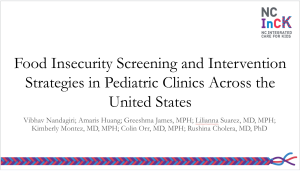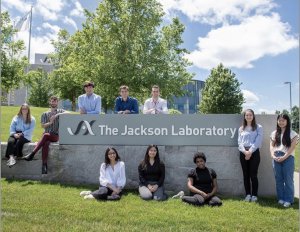Experience 1: Chilkoti Lab, Undergraduate Researcher

Date: February 2023 – Present
Summary: Outbreaks of Ebola, a hemorrhagic fever viral disease, in West Africa are a public health crisis due to the disease’s high mortality and contagion rates. These epidemic outbreaks in low-resource settings require a cost-effective and rapid diagnostic tool to quickly detect and triage medical intervention, allowing for more efficient contact tracing and reduction of transmission. However, reverse transcription polymerase chain reaction (RT-PCR), the gold standard for Ebola diagnosis, is a time and resource-intensive method; this signals a need for a low-cost and rapid point-of-care diagnostic tool that is both accurate and sensitive. Nanobodies (Nbs), heavy chain antibodies of camelids, have shown higher antigen binding affinity, stability, and smaller structure in comparison to regular antibodies and have shown great potential in diagnostic tools. However, the development of such tools that utilize Nbs to detect antigens traditionally relies on animal immunization methods to produce selective and potent clones; these conventional affinity maturation methods are often slow and costly. Our project proposes a more cost-effective and time-efficient method to generate potent Nbs against Ebola-secreted glycoproteins (sGP). I helped my mentor with a project that uses engineered yeast display technology to generate synthetic recombinant nanobodies for sGP. Using an autonomous hypermutation yeast surface display system that employs error-prone orthogonal replication, surface-displayed Nbs mutate through culturing and enrichment to produce high-affinity Nb clones. We will be generating and assessing the performance of yeast cells with amino-acid mutations for high-affinity binding nanobodies; this pipeline utilizes a more cost and time-effective method of generating high-affinity nanobodies through yeast display technologies that mimic somatic hypermutation.
Experience 2: North Carolina Integrated Care for Kids (NC InCK), Health Policy Research Intern

Date: September 2022 – Present
Summary: As an NC InCK intern, I worked within a research team that explored childhood food insecurity screenings and intervention policies in pediatric centers nationwide, focusing on alternative payment models for financial incentivization to inform NC’s Medicaid Transformation initiative. I helped with interviewing participants about EHR integration, health system innovation, and quality care metrics and reimbursements. Then I also helped with post-interview processing, in which I conducted rapid qualitative data analysis through transcript verification and interview summary analysis. Additionally, I helped with conducting literature reviews for the development of a manuscript to be published with collaborators from the Duke-Margolis Center for Health Policy, UNC School of Medicine, and Wake Forest School of Medicine. I was drawn to NC InCK’s mission to better the health and wellness of children and learned how shaping policy can provide profound impacts towards the betterment of population health.
Experience 2: The Jackson Laboratory, Summer Research Intern

Date: June 2022 – August 2022
Summary: Cutaneous T-cell lymphoma (CTCL) is a type of cancer that forms in the white blood cells, T lymphocytes (T cells), resulting in auto-immune responses that attack the skin and hair follicles, through lymphocytic infiltration classified as epidermotropic and folliculotropic, respectively. Due to the cancer being rare, there is an insufficient amount of research surrounding CTCL. Histopathological images are informative data sources for cancers such as Cutaneous T-cell lymphoma (CTCL); however, manual review of these images is tedious and time-intensive, indicating a need to develop tools to analyze these sources with accuracy. In a paralleled way, although histopathological images provide rich information surrounding cancer growth and its subsequent treatment, not much study has been done to advance computational tools toward the efficacy of image analysis. As an intern, I applied attention-based deep learning algorithms (CNNs and Vision Transformers) to analyze the morphological features of CTCL Hematoxylin and Eosin imaging and for tissue class prediction. I presented my final project work in an oral presentation at the 2022 Jackson Laboratory Summer Symposium.